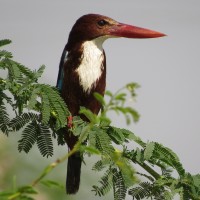Beschreibung
Hula Nature Reserve is divided into several zones. After paying the entrance fee, you can start exploring the park. There is a trail along a wetland, along or actually over the water and there is a stretch along reed beds. There are several good birding spots. There are unusual birds here at any time of year, as well as muskrats and turtles that are easy to find. The Graufischer, Rosapelikan and various species of herons are always there. Among the other birds you can observe are Nachtreiher, Eisvogel, Braunliest, Silberreiher, Kuhreiher, Rallenreiher, Seidenreiher, Kranich, Purpurreiher, Zwergscharbe, Sichler, Krickente, Rohrdommel, Flußseeschwalbe and Wiesenschafstelze.
Details
Zugang
On the Rosh Pina-Kiryat Shmona road (no. 90), turn east 3 km after the Yesud Hama‘ala. Drive your car to the visitor center of the park and park in the parking lot. Click on the P in the map for directions or coordinates. The park can only be explored on foot and possibly by wheelchair. A recommendation is to watch the movie in the visitors center beforehand.
Opening times: Summer hours Sunday–Thursday and Saturday 08.00 - 17.00. Friday and holiday eves: 08:00 - 16.00. Winter hours: Sunday–Thursday and Saturday: 08:00 - 16.00. Friday and holiday eves: 08:00 - 16:00. Entrance fee 35 Shekels (about 9 euro).


